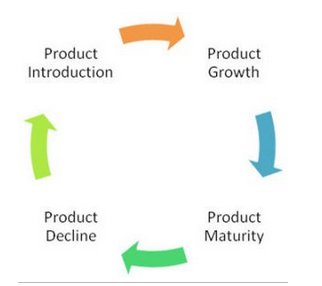There are four major stages that needs to be taken to complete the cycle of software product testing. Each stage has its own importance and transition to the next stage. Software product testing helps companies and teams build a good and up-to competition product. It also helps companies and teams to stay on top of their game and make the necessary changes and developments to the product that gives the product an edge over competitive products. Here are the four major stages for software product testing:

Chart represents the flow of the four stages of software product testing.
- Product Introduction: In this stage, product will be introduced for the first time to the market and potential users. So, as a product testing team there shouldn’t be any problem or flaws left in the product because this would be the first impression of the product. Team has to check everything for the product to be a success.
- Product Growth: After the launch of the product. If the product becomes a success, the development process becomes faster with limited time in hand because at this stage, product is in race with other products and if you do not keep up with development and improvement of your product in minimum time your product will be gobbled down by major companies and products. So, in this stage of the product testing the team has to grow, expand and add more features to the product in order to sustain the harsh competition from the competitors.
- Product Maturity: Once the product makes it to this stage then it is less about the improvements of the product and more about business. At this stage of product testing, the product should be in its fullest form and be ready to face what it is built for. At this stage, team should be more focus on marketing the product and attract more clients for the product.
- Product Decline: At this stage, times has changed, demands have grown and more is expected. The product needs a makeover. It needs more capabilities, functionalities and look. So, the product is re-evaluated and start to make it better in order to face the new challenges of the market.
All these stages are very productive and efficient for software product testing. It will keep any company or product up-to expectations and competition in the market place.
For further reading of the article please visit:
http://www.softwaretestinghelp.com/how-perform-software-product-testing/
From the blog CS443 Software Quality Assurance & Testing – Computer Science World by Haider Hussain and used with permission of the author. All other rights reserved by the author.
